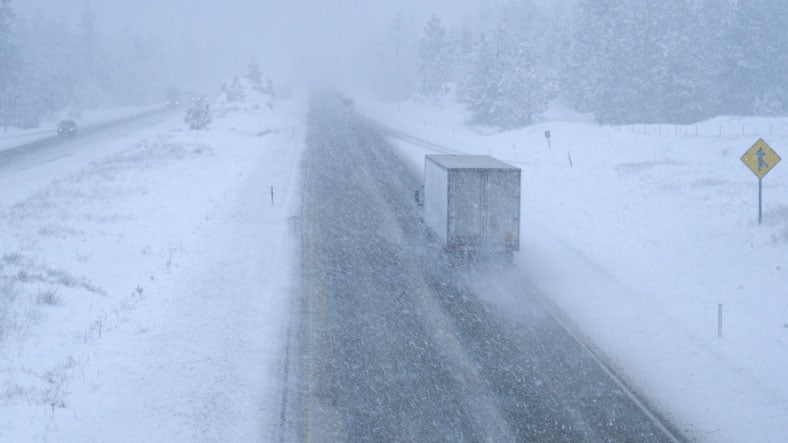Avoid 6 of the Most Common Hazardous Waste Violations
 Whether you’re a large or small quantity generator of hazardous waste, you have a lot to think about regarding managing your hazardous waste in a safe and compliant way. In 2012 there was $16 million dollars worth of property damage due to hazardous waste incidents. Of those incidents, only 6% were blamed on natural causes. This means that of all accidents, 94% were preventable. Following hazardous waste regulations is one way to avoid hazardous waste related accidents.
Whether you’re a large or small quantity generator of hazardous waste, you have a lot to think about regarding managing your hazardous waste in a safe and compliant way. In 2012 there was $16 million dollars worth of property damage due to hazardous waste incidents. Of those incidents, only 6% were blamed on natural causes. This means that of all accidents, 94% were preventable. Following hazardous waste regulations is one way to avoid hazardous waste related accidents.
The EPA lists some of the most common citations for hazardous waste. We’ve used this list to provide you with some tips on avoiding these violations and keeping your facility compliant. Here they are:
1. Failure to Make a Hazardous Waste Determination
To avoid being cited for this violation, all waste generated on site must be characterized. If you’re unsure whether or not something meets the federal or state criteria for a hazardous waste, then err on the side of caution and manage it as if it is one. In this case, it’s better to be safe than sorry.
There are several questions you must ask about each kind of waste you produce before you discard it. First you must ask, “Is this a solid waste?” Forget about your definitions of solid, liquid or gas. In many cases RCRA somply defines a solid waste as something that has been abandoned. So if you can still use the material for it’s intended purpose, chances are you don’t have a RCRA hazardous waste on your hands.
If you do have a material you no longer have a need for, the next question to ask is, “Is it excluded or exempted from hazardous waste rules?” There are many different types of exeptions and exclusions that cut across the industry. If your material meets any of these definitions then you may be able to manage your solid waste in the prescribed manner.
The final questions you must ask are, “Does it display any of the hazardous waste characteristics (toxic, ignitable, etc.), does the material meet the listing criteria for hazardous wastes, and is this material regulated by that state it is generated in?" Once you have determined the answers to these questions, you can then make the appropriate determination.
2. Failure to Make Weekly Inspections
According to RCRA, inspections of hazardous waste areas and containers should occur on a weekly basis. To avoid citations for this, keep logs of these inspections. A tip for staying on track is to make sure to perform this inspection on the same day every week. This shouldn’t be on a Friday or a Monday because of the frequency of holidays and vacation days that occur at either end of the week. Also, you should make sure you have a “back-up inspector” able to fill in for the person who regularly does it when they’re absent from work.
3. Failure to Close Containers When Not Adding or Removing Waste
If you’re not adding or removing waste from a container, the container needs to be closed. A container is considered open if any of the contents would spill out if the container were overturned. Make sure the container is closed properly, taking all latches and other precautions into account. To assure this is done on all occasions, make sure all employees working with hazardous waste containers are trained on how to close them and follow up regularly to make sure they are doing so
4. Failure to Meet Contingency Plan Requirements
The goal of a contingency plan is to minimize hazards to human health or the environment from hazards presented by hazardous waste generated. This plan must be implemented by owners or operators of hazardous waste generating facilities. The plan should include emergency procedures and details on how the plan was created as well as a list of emergency coordinators and emergency equipment.
5. Failure to Meet Satellite Accumulation Area Requirements
Satellite accumulation area compliance requires that all containers in the area be marked with the words “hazardous waste.” All generators must also make sure that hazardous waste has not been stored in the area for longer than 72 hours once the container is full or a full date has been added to the label. It is also important to recognize that the amount stored in this area does not exceed the maximum regulated limits.
6. Failure to Make Adequate Aisle Space
This violation requires little explanation but is easy to forget or ignore. When storing hazardous waste, you should make sure that all containers are spaced in a way that allows unobstructed movement and exit in case of an emergency. It’s also important to make sure that all emergency equipment is accessible and unobstructed in these areas.
Please remember that this is not a complete list of requirements nor does it take into account the variables that your state may require when implementing this federal program.
Your business has complex needs, and finding the right way forward is not always so clear cut. Another way to assure a compliant hazardous waste process is through an on-site waste management team. Check out our on-site waste removal process below or visit our waste management services page to learn more.






